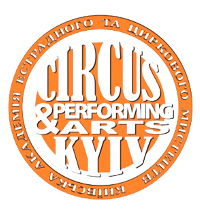ON THE QUESTION OF THE CREATIVE DYNASTY OF SHEVCHENKO IN THE HISTORY OF THE DOMESTIC CIRCUS
Abstract
The article aims to actualize the issue of the importance of creative dynasties in the history of Ukrainian circus art, from the stage of its existence as part of the Soviet circus, the strongest in the world, to the present day, when the chronicle of the modern national circus is being written. The low degree of knowledge of this phenomenon in the Ukrainian scientific space is emphasized, leading sources of information are given that help to highlight the issue. A brief excursion into the history of the formation of the Ukrainian circus, the main vectors of its work, the reasons for the extreme popularity and great demand in the Soviet period are given, in general, its “golden age” associated with active touring activities is analyzed. The phenomenon of the circus family is highlighted as one of the fundamental in the formation of the character, the specifics of circus art, especially in the genre of training when working with predators, where in the first place is the mutual trust and reliability of partners who have a job associated with a risk to life. The place of creativity of the Shevchenko circus couple in the history of the Soviet and Ukrainian circus is emphasized, the main programs, unique tricks that have entered the history of the world circus are highlighted, an emphasis is placed on the role of specific personalities in the creative biographies of the artists, the Shevchenko spouses (B. Eder). The history of the emergence of individual complex tricks of the central attraction of the tandem of animal trainers (“Trained lionesses”) is described, the path from the beginning of work with predators to the world-famous number, which has no analogues in any country in the world. Separately, the different vectors of the creative path of each of the trainers are emphasized: acrobatics by L. Sh., The work of V. Sh. in cinema (his role as an actor, director, stuntman), collaboration with legendary directors. The article is in the nature of an essay with elements of memoirism, based on materials from memoirs, interviews, reviews of famous circus aractions, programs with the participation of the creative tandem of V. and L. Shevchenko
References
1. Ганешин К. Цена легкости. Советская эстрада и цирк. 1974. № 4.
2. Ганешин К. В перекрестном прыжке. Советская эстрада и цирк. 1968. № 12.
3. Ганешин К. Трудные и радостные будни. Советская эстрада и цирк, 1983. № 10 (313). Сс. 25-27.
4. Ганешин К. Режиссёр нужен всем. Советская эстрада и цирк. 1968. №1.
5. Дмитриев Ю. Советский цирк сегодня: очерки. Искусство, 1968. Сс. 65-72.
6. Маяцкий П. Прошло два года. Советский цирк. 1958. № 6.
7. Рыбаков М. Киевский цирк: люди, события, судьбы. Киев: Атика, 2006. 304 с.
8. Шевченко Л. Дресура тварин: зародження явища, стадії еволюції та актуальні проблеми сьогодення. Арт-платформа. 2021. Вип. 1(3). Сс. 107-122.
9. Шнеер А., Славский Р. Украинский цирковой коллектив. Цирк. Маленькая энциклопедия. Москва: Советская энциклопедия, 1979. 337 с.
Refereces:
1. Ganeshin, K. (1974). Tsena legkosti [The price of lightness]. Sovetskaya estrada i tsirk, 4 [in Russian]
2. Ganeshin, K. (1968). V perekrestnom pryzhke [In the cross jump]. Sovetskaya estrada i tsirk, 12 [in Russian]
3. Ganeshin, K. (1983). Trudnyye i radostnyye budni [Difficult and joyful everyday life]. Sovetskaya estrada i tsirk, 10 (313), 25-27 [in Russian]
4. Ganeshin, K. (1968). Rezhissor nuzhen vsem [Everybody needs a director]. Sovetskaya estrada i tsirk, 1 [in Russian]
5. Dmitriyev, Yu (1968). Sovetskiy tsirk segodnya: ocherki [Soviet circus today: essays]. Iskusstvo, 65-72 [in Russian]
6. Mayatsky, P. (1958). Proshlo dva goda [Two years have passed]. Sovetskiy tsirk, 6 [in Russian]
7. Rybakov, M. (2006). Kievskiy tsirk: lyudi, sobytiya, sud'by. Kiev: Atika [in Russian]
8. Shevchenko, L. (2021). Dresura tvaryn: zarodzhennya yavyshcha, stadiyi evolyutsiyi ta aktualʹni problemy sʹohodennya [Animal training: the origin of the phenomenon, stages of evolution and nowadays]. Art-platforma, 1(3),107-122 [in Ukrainian]
9. Shneyer, A. & Slavskiy, R. (1979). Ukrainskiy tsirkovoy kollektiv [Ukrainian circus collective]. Tsirk. Malen'kaya entsiklopediya. Moscow: Sovetskaya entsiklopediya [in Russian]

 ISSN
ISSN  ISSN
ISSN 



